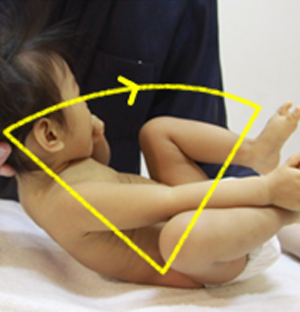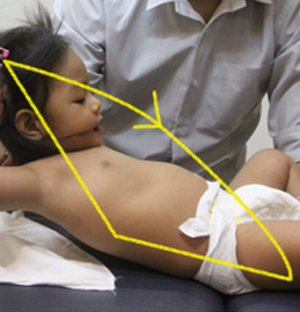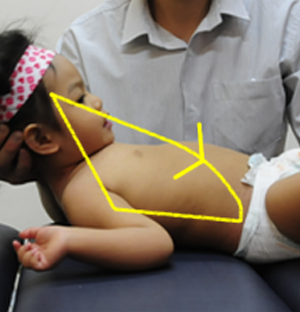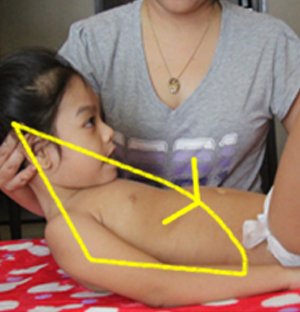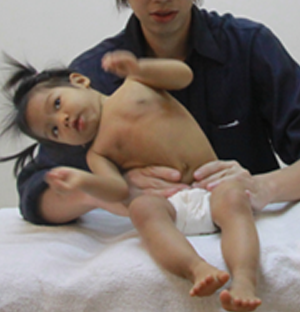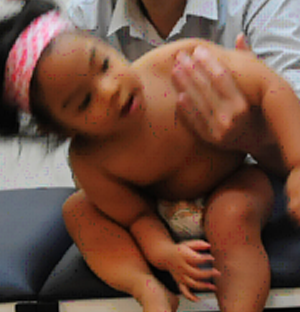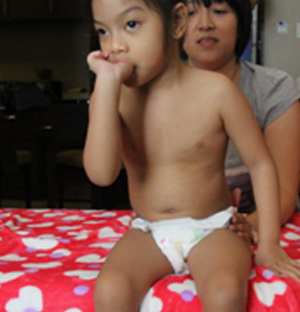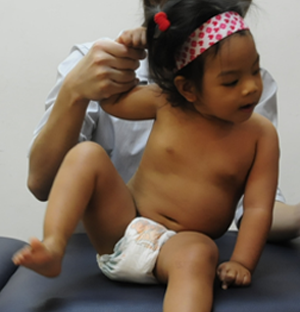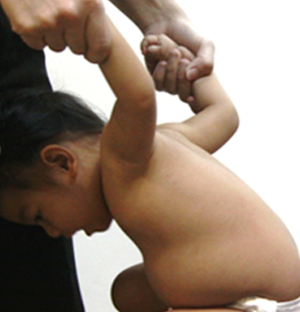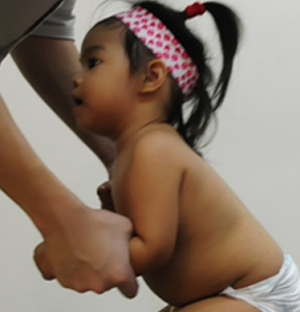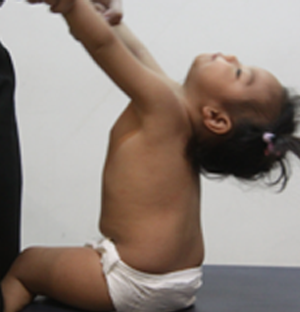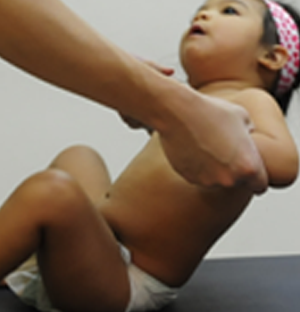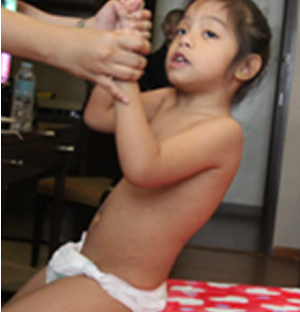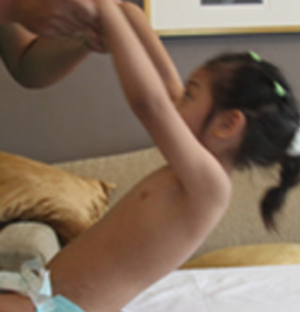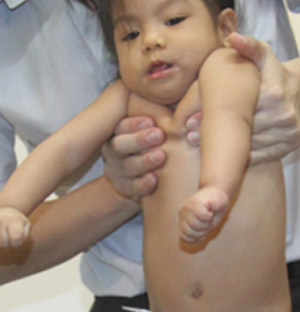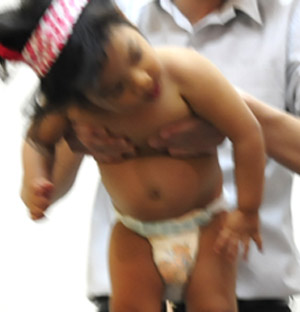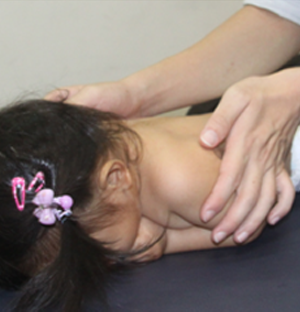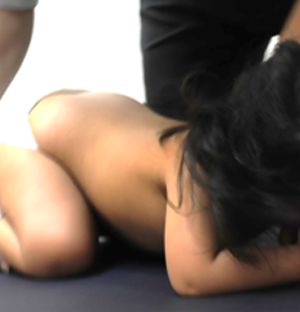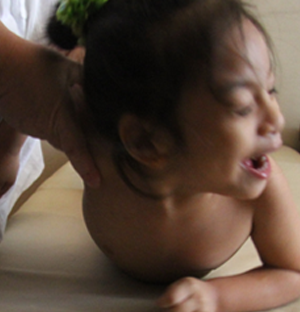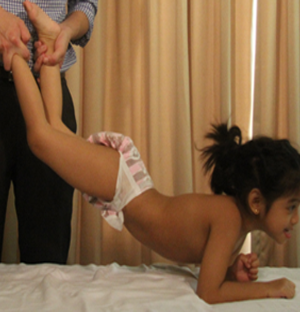When my friend told me that she regretted not starting on the ABR exercise program earlier, on one hand I felt really curious, on the other I was puzzled. What was it about ABR that stood out from the rest? I ended up going online to further research. I saw many before and after pictures of children under the ABR program and that really left a huge impact on me. We were lookgin at the progress of other children under the same program we had and knew we wanted to see more from our daughter. If we wanted a different result, we had to do something different so we decided on the ABR program.
Although my daughter tried many different therapies before, she was never interested in her surroundings. Ever since we started on the ABR program, I realized that the more exercises we did, the more in sync she became with her surroundings and was aware of the things around her. She took a liking to lying on the floor, rolling around, and crawling from place to place.
We appreciate how ABR isn’t invasive at all, and how much control we get, as parents, over our child’s therapy program. ABR also helped us understand our child’s condition better, and explained Cerebral Palsy in direct relation to our daughter. This is where ABR stands out from the rest; every training session includes a proper assessment and report of progress for our child, giving us an opportunity to ask questions as well as understand where my daughter has improved and what’s the next step we should take.
With most therapies, you’d see the therapist three times a week and you’ll have at most 6 hours of therapy done a week. We would do homework and do home exercises, but whenever we had a new therapist, the transitions were not ideal. And if we miss on some sessions because of absences from either the therapist or us, our progress is delayed. ABR helped us understand that for Cerebral Palsy kids, progress comes in mini milestones. We acknowledge that our daughter needs time to get move forward, step by step. We need to see each step as an achievement, and not simply focus on the end goal. Now we celebrate each mini milestone- milestones that others would usually overlook, but to Cerebral palsy children is a huge deal.
ABR has provided us with an exercise program with aims to change my child’s quality of life. This is going to be a long journey, but I am sure that my daughter will show progress under the ABR home program. My daughter was fortunate enough to have found ABR as a young child, I can only hope that you too will be able to gift your child the gift of ABR when he or she is still young.
-Krissy
The following pictures were extracted from progress reports for the past few years:
|
|
|
|
July 2010 Bring the head forward lifts the entire trunk with pivot not at the neck but instead at the hip. |
Nov 2010 Bring the head forward lifts the upper body instead of the entire trunk as seen in 4 months ago. A go into paradoxical reaction (opposite to the direction of the head |
|
|
|
|
April 2011 Bring the head forward now no longer lifts thetrunk but the chin lands very low (somewhere between the clavicle and the nipples) and the jaw sinks into the mouth floor. Arms still go in the opposite direction of the head movement. |
April 2013 Chin lands now closer to clavicles showing greater mobility of the cervical spine. Jaw no longer sinks into the mouth floor. And the arms now goes in the same direction of the head movement. |
|
|
|
|
|
July 2010 External support at the waist Is not sufficient to maintain Sitting position |
April 2011 Anya sitting April11 GIF External support above the pelvis can somewhat maintain sitting but as soon as she leans too much forward, she loses her sitting position |
April 2013 Anya sitting April13 GIF Beautiful recovery of position with just support above the pelvis.Shows beautiful variety of movements |
|
|
|
|
Nov 2010 One arm support is not enough for sitting |
April 2011 One arm support is sufficient to support her in sitting |
|
|
|
|
Nov 2010 With 2 arms external support, she drops Forward with her arms left behind – Reflection of extreme weakness of the arms |
April 2011 Arms are much stronger for the external support to help with sitting and maintaining of upright position |
|
|
|
|
|
|
Nov 2010 Arms are very weak and head drops helplessly backwards despite given external support |
April 2011 Arms and head hold well but hands are held very closely against her trunk for additional support |
April 2013 Hands are more released now |
June 2014 Finally arms are fully released and extended. This reflects the increased freedom of usage of arms. |
|
|
|
|
Nov 2010 Difficult to carry or transfer position. Skin is slippery and shoulder girdles slide Upwards. |
April 2011 Improved tissue quality and increased stability of shoulder girdle makes transfer much easier. |
|
|
|
|
Nov 2010 Arms cannot bear her own weight and head Is unable to free itself and is stuck with face on the bench |
April 2010 Arms bear weight of trunk and head has more control |
|
|
|
|
April 2013 Able to bear weight even with just one arm |
Dec 2013 Able to do wheel barrow |




